A look inside the rescue effort to save soccer team trapped inside Thailand cave
New images and video show crews preparing for a potential rescue mission.
In northern Thailand, rescuers are working around the clock to save 12 boys and their soccer coach who have been trapped inside a partly flooded cave for almost two weeks.
New images and video taken from inside the Tham Luang Nang Non cave show crews with flashlights and equipment, struggling to wade through the floodwater's powerful currents as they prepare for a potential operation to rescue the group in the coming days.
After days of heavy rain, rescuers took advantage of the relatively dry weather by pumping out as much floodwater as possible from the cave. Meanwhile, crews are working to divert any water flows in the area from entering the cave.
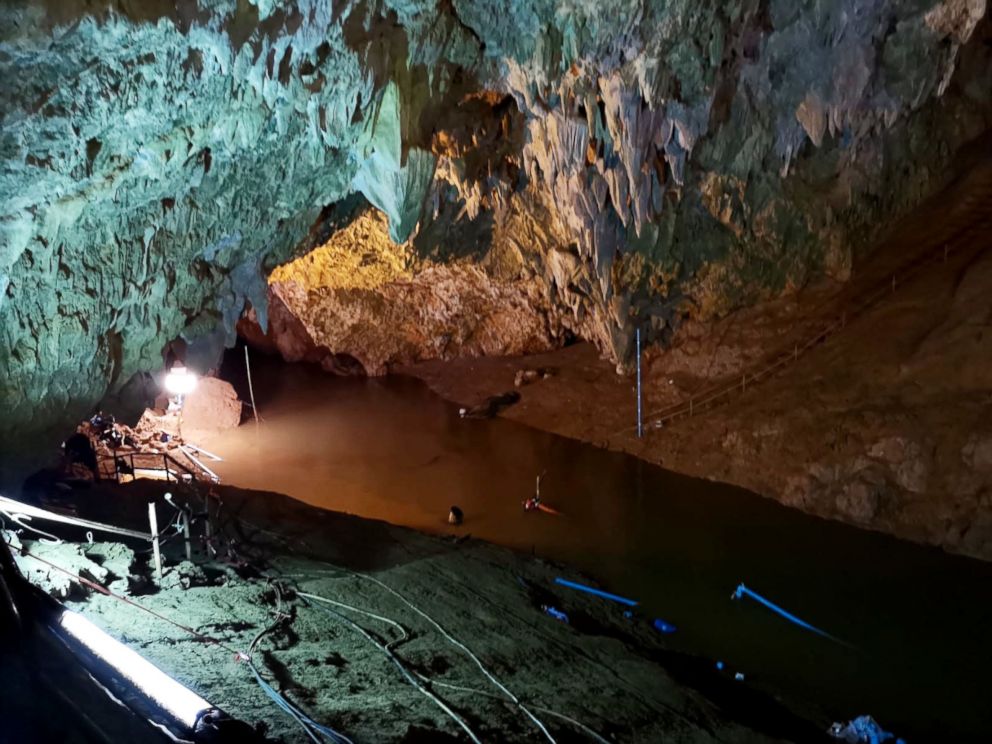
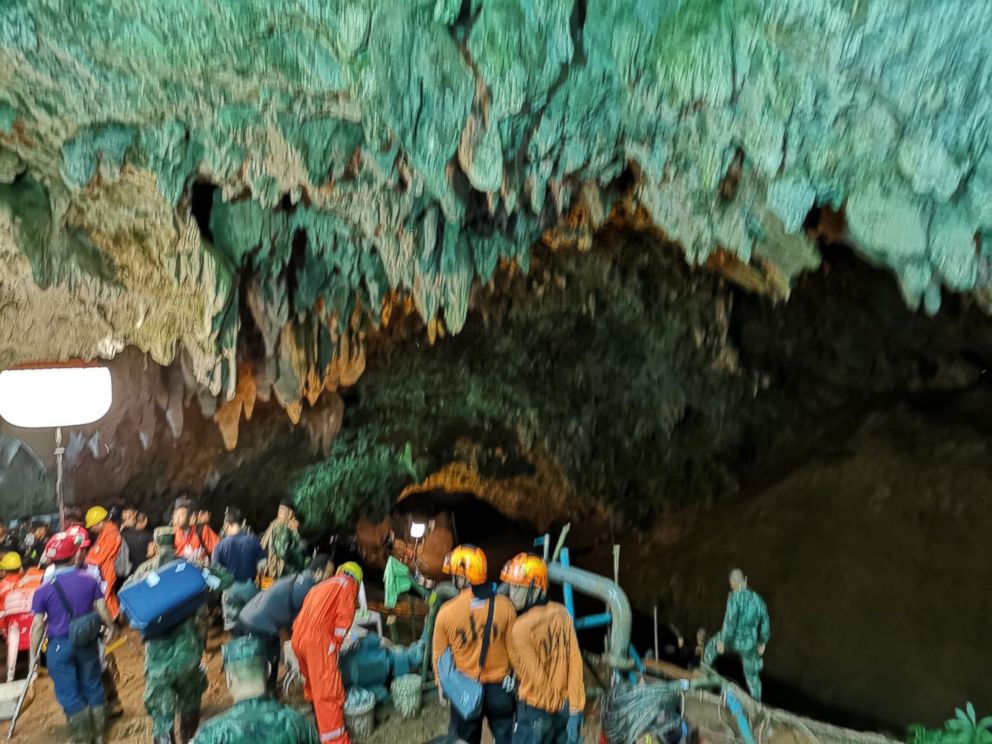
The images also show crews installing dive lines and leaving extra air tanks along the path that rescuers may use to get the boys and their coach out.
Monsoon rains are forecast to pummel the region Sunday as Thailand enters its wet season. There are concerns the downpour would make a rescue mission more precarious or even flood the area of the cave where the group remains stranded.
"We got to do it before the rain comes. When the rain comes, the water in the cave is going to fill up and it is going to be hard to take the kids out," Thai groundwater specialist Tsanet Natisri told ABC News in an interview Thursday.
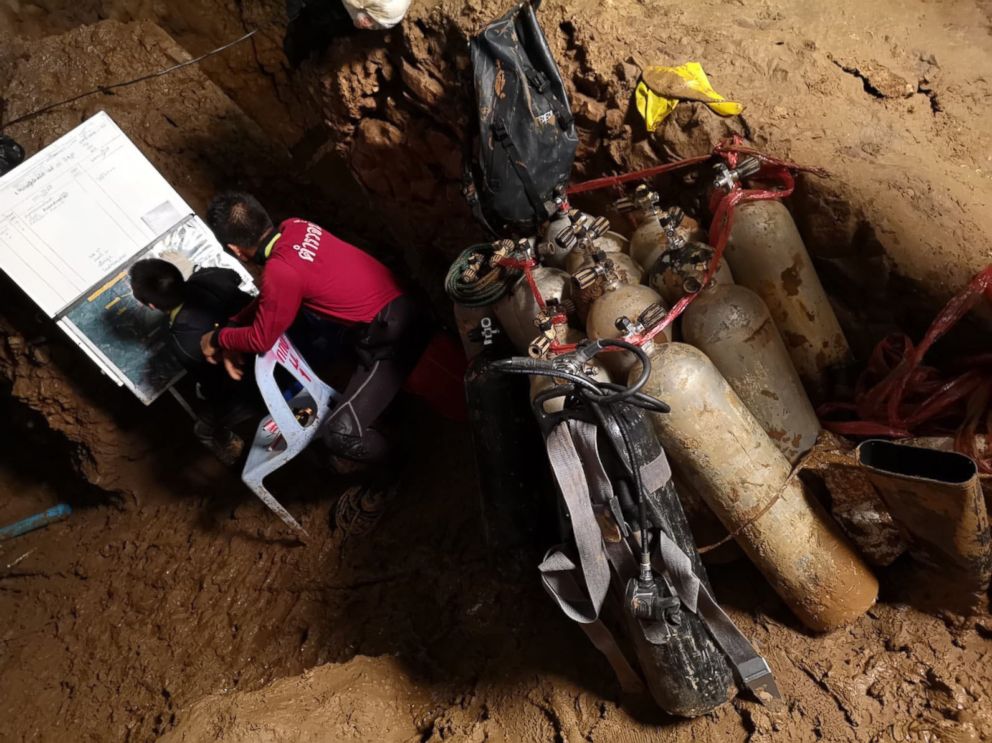
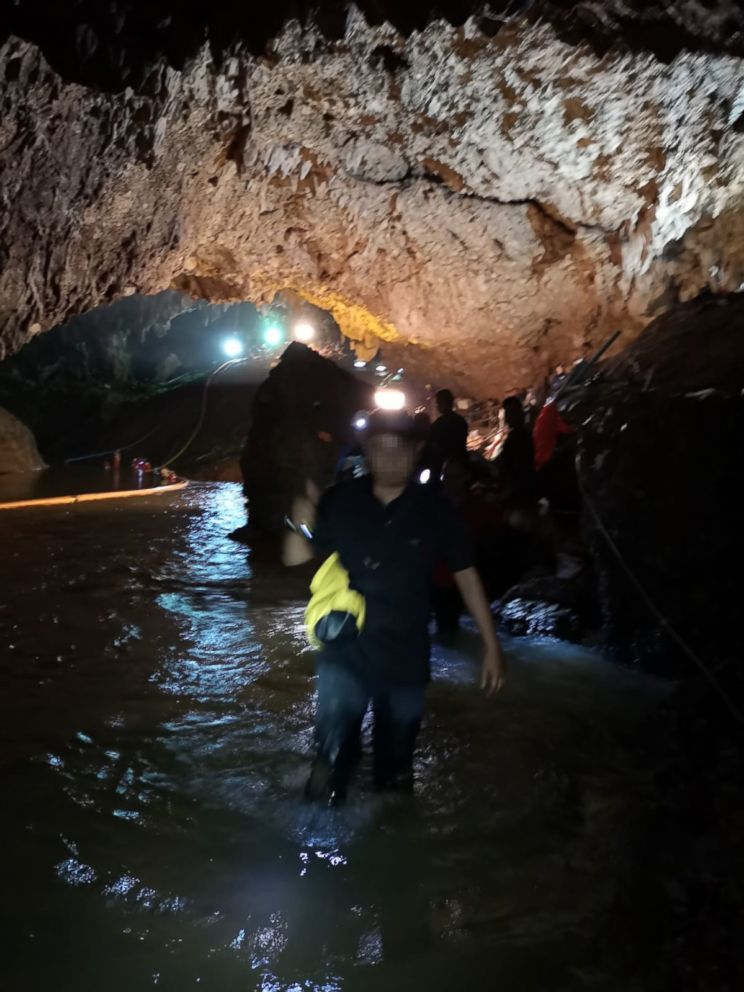
The boys, between the ages of 11 and 16, hiked into Tham Luang Nang Non, Thailand's longest cave, with their 25-year-old soccer coach after practice on June 23. The coach reportedly brought his team to the popular tourist site in mountainous Chiang Rai province for fun excursions.
But as the group ventured deeper into the cave complex, the sky opened up and it began to rain. The downpour flooded parts of the cave and cut off their exit route, forcing the group to forge ahead before finding a raised, dry chamber where they were trapped in total darkness.
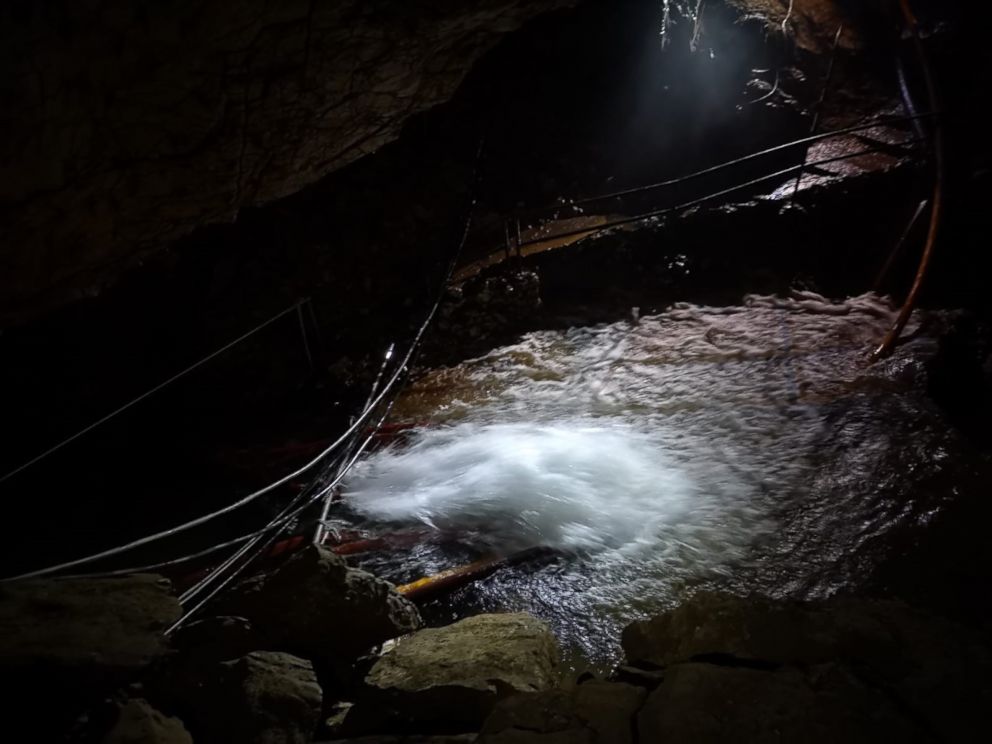
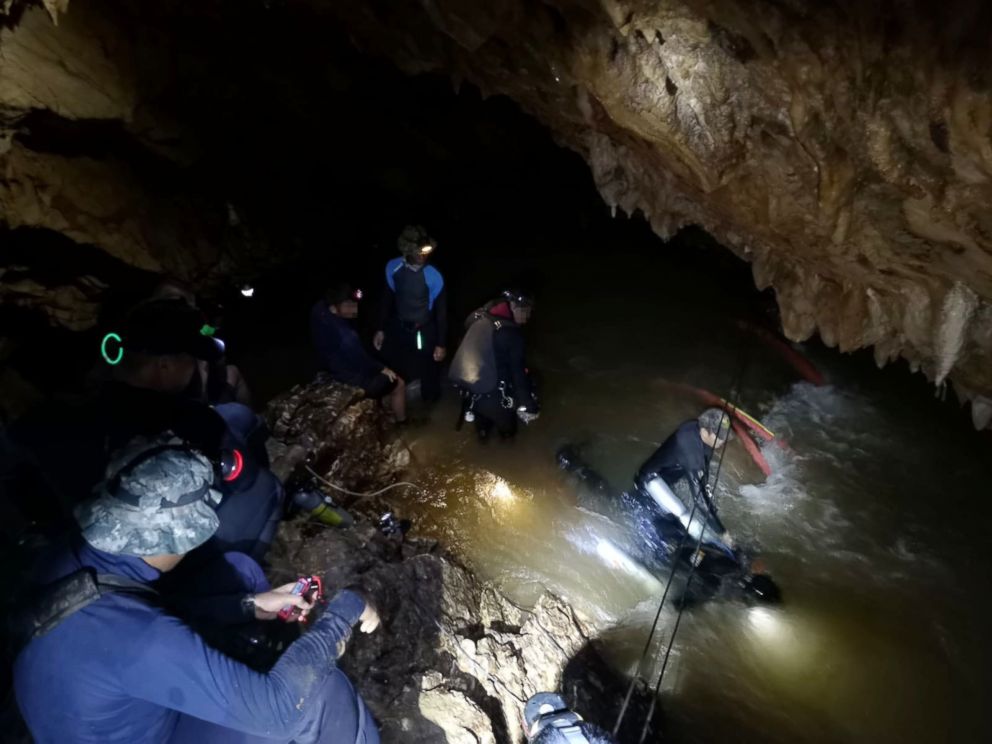
Thai officials launched a massive search and rescue operation in Khun Nam Nang Non Forest Park involving more than 1,000 people, including specialists drafted from various nations such as Australia, China, Japan, the United Kingdom and the United States.
More than a week later, two British cave divers found all 13 alive in an area that's about three miles from the cave's main entrance. It took the divers nearly six hours to navigate through a treacherous maze of caverns and tunnels, both dry and flooded, with some barely wide enough for their diving equipment.
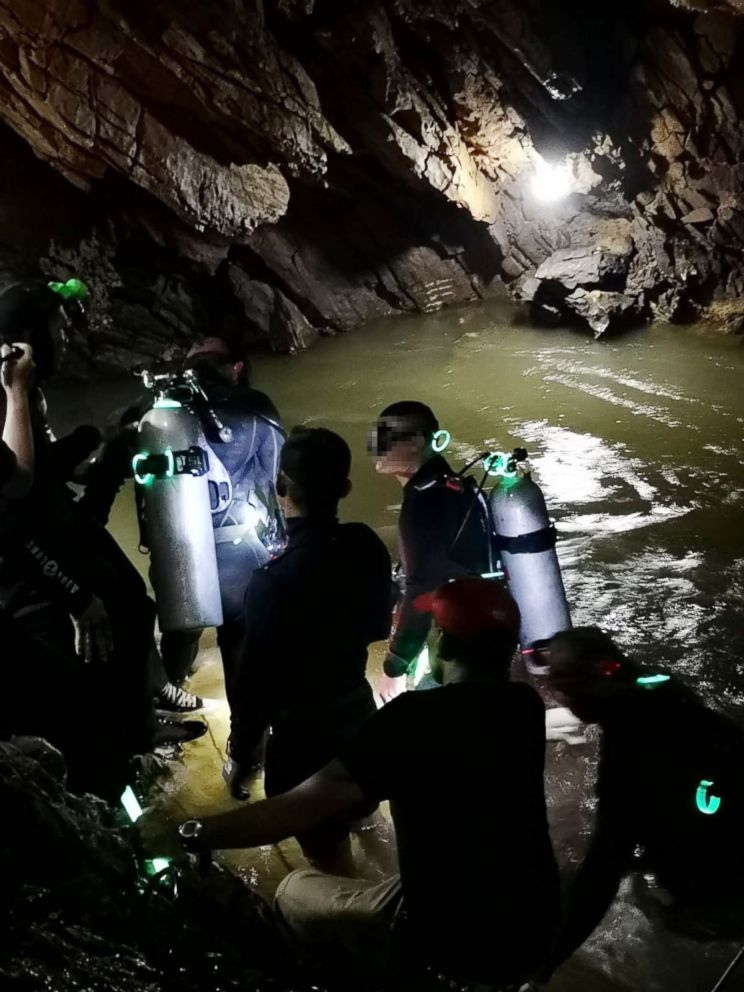
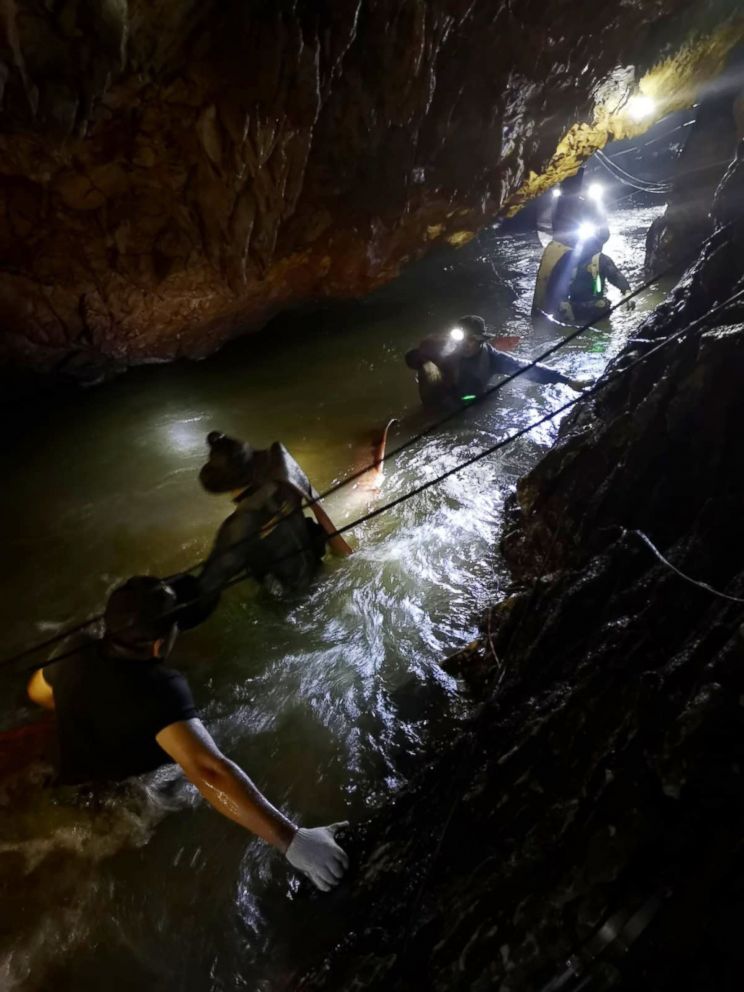
Royal Thai Navy members, a medical doctor and a nurse have been looking after the group ever since, providing them with food and medical assessments. While they were in relatively good shape, some of the boys complained of being weak from stress and lack of food while others suffered from minor injuries, such as scrapes and cuts.
Thai officials said they are working on installing electricity and a fiber optic phone line in the cave so the boys can speak with their families waiting anxiously outside.
"Currently, all 13 are regaining physical strength while the water level is continuously decreasing. Thirteen sets of life-saving equipment have been prepared for them," the Thai government said in a statement released Thursday.
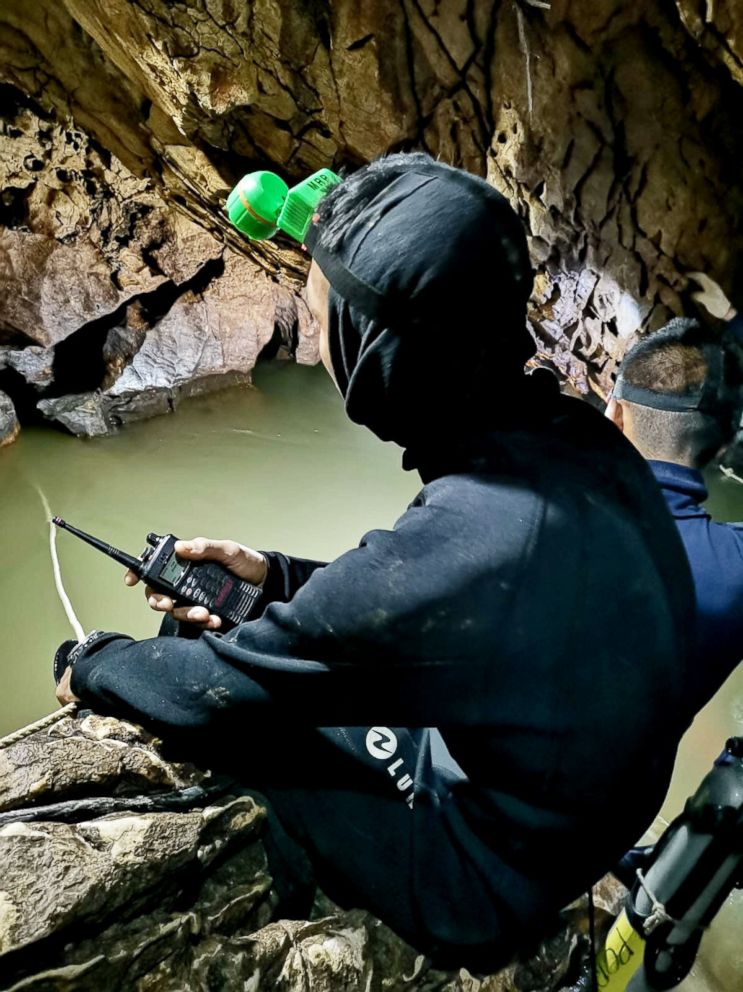

Thai officials told ABC News on Thursday that rescuers are no longer pursuing an effort to have the boys swim and dive out from the cave. Instead, crews will focus on pumping out water from flooded passageways leading to the Nern Nom Sao slope where the boys and their coach were found inside.
Thai authorities said Thursday that the pumping has been "carried out efficiently," with only one chamber adjacent to Nern Nom Sao under water.
Crews are also drilling into the rock to widen some of the narrow passageways while teams outside continue scouring the region's rugged jungle-covered terrain for any natural shafts that connect to the cave network below.
"The current obstacles are the imminent rainfall and the narrow and slippery trails in the cave," the Thai government said. "Rescuers and doctors are constantly assessing the weather condition and the survivors’ health in order to come up with an appropriate extraction plan."
ABC News' Brandon Baur, Matt McGarry and James Longman contributed to this report.



